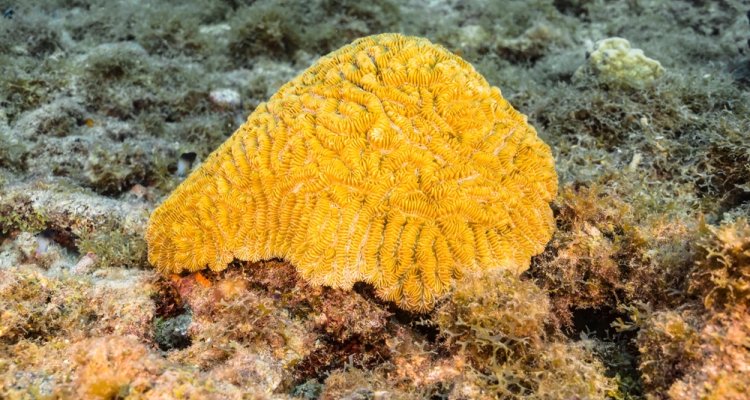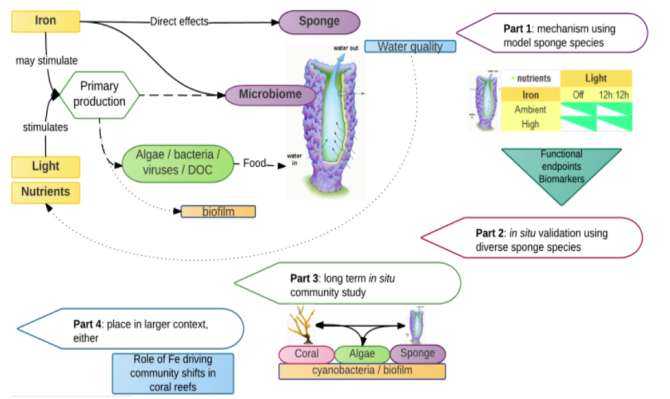
Project
Pumping iron: can iron availability fuel the sponge loop and affect coral reef community structure?
Coral reefs around the globe are changing, but while some reefs recover after disturbances, others appear to shift from a coral-dominated system towards a system with more algae, cyanobacterial mats or sponges.
Motivation
That this is far more common in the Caribbean Sea compared to the Indo-Pacific, might be in part explained by a higher influx of dust-associated iron in the Caribbean (Figure 1), which can lift nutrient limitation for primary producers. Yet, the role of iron availability in coral-algal shifts is still mostly unexplored. Another key knowledge gap is what role sponges play in these shifts. We expect sponges to influence coral-algal dynamics, as sponges filter feed on bacteria, microalgae and exudates of both algae and corals; are very abundant in the Caribbean; compete for space with both corals and macro algae; and loop nutrients back to the reef. Dissolved iron also has been shown to affect the functioning of sponges directly. This PhD project will address the effect of iron availability on sponges and their subsequent influence on reef community shifts.

Research questions
- How does iron enrichment influence sponge morphology, physiology and microbiome composition;
- How do iron and nutrient availability fuel nutrient cycling through the so-called 'sponge loop';
- How do iron availability and sponge presence influence shifts between domination of corals, macro algae and other benthic groups.
Method
Highly controlled aquarium experiments and field experiments in the Caribbean will be performed to unravel the mechanism of iron enrichment on the sponge holobiont (Figure 2, part 1 and 2) in collaboration with local partners. The effects of iron enrichment on community composition will be studied in a long term in situ enrichment experiment on Moorea, French Polynesia, known for its low iron background levels (part 3). The combination of physiological, metagenomic and chemical measurements on multiple ecosystem components will reveal how iron addition can influence phase shifts in coral reefs (part 4).
